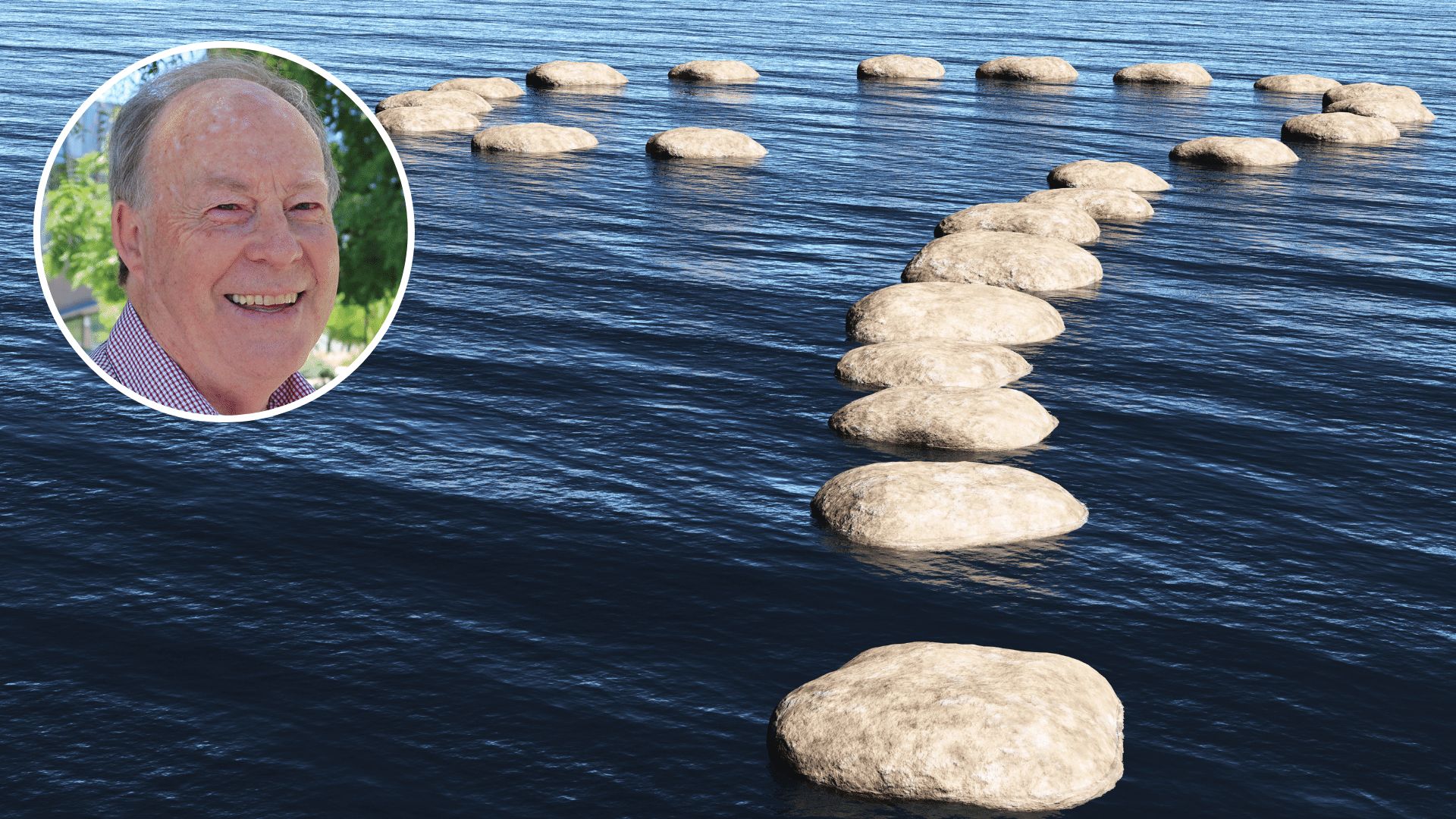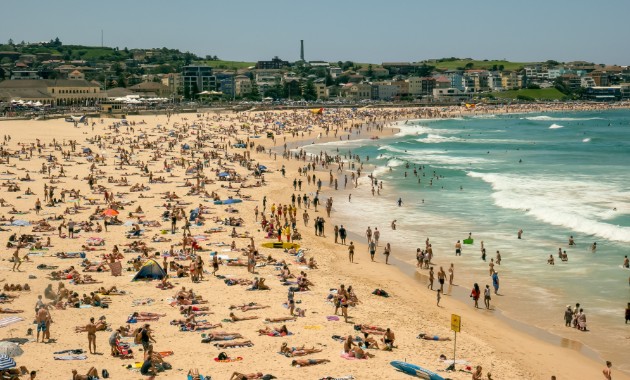By Emeritus Professor Jim Pratley (pictured, inset), Research Professor in Agriculture in the Charles Sturt School of Agricultural, Environmental and Veterinary Sciences in Wagga Wagga and is a member of the Graham Centre for Agricultural Innovation.
As we approach World Water Day on Monday 22 March it is pertinent to reflect on Australia’s need for water sustainability.
We know that Australia is the world’s most arid inhabited continent, with a highly-variable water supply, yet it is somewhat ironic that our nation is surrounded by ‘unlimited amounts of water’.
In south-eastern Australia we have suffered double the incidence of drought ─ about eight years ─ since the year 2000 that we experienced in the decades before.
In NSW alone, we had a reduction in the gross value of production (GVP) of 50 per cent or more in these years, and there are legacy losses in the one to three years following. Given that a ‘normal’ GVP year in NSW would generate around $12 billion, then a 50 per cent GVP forgone in each of the eight drought years since 2000 likely approaches $50 billion. Is this something to ignore?
The year 2019 provides a sobering lesson. This was a year when, in NSW, we saw water supplies dry up for many communities, for example, in Guyra, Tamworth and Menindee. There were the dry rivers and the associated mass dead fish and algal blooms.
The usually vibrant and important industries (rice, cotton, livestock) suffered decimation of their production and this resulted in considerable job losses with almost immeasurable damage to businesses and communities across the production areas. The rising unemployment and business impacts led to mental health issues. Governments responded by handing out many taxpayer-funded support packages.
This drought added a dimension not really experienced in living memory. The extant vegetation was very dry and highly flammable, leading to the catastrophic fire events that resulted in devastation and yet more government support packages. It was a year not to be forgotten and it is hoped that we don’t see the likes of it again.
Political frustrations (“We never know the worth of water till the well is dry”)
Well, think again. The climate change projections, which hitherto have been very close to the mark, strongly suggest that 2019 is not an outlier year of the future.
We can expect regular occurrences of ‘2019s’ going forward. On top of that we are told that the average global temperature will rise by up to one degree Celsius by 2030.
This scenario, if true, is not something we would want to look forward to and it behoves us all, and particularly decision makers, to look for adaptability measures that lessen the impact as far as we can and as soon as we can.
We need strategic vision that focuses on water sustainability for the communities, including First Nations peoples, the river flows, irrigation businesses, and other industries.
 Two current political ‘sports’ involve water. The first is the building of new dams and extending others. Of course, we anticipate there will be floods to fill them but there has been a significant reduction in the number of floods this century. Dams without water then are just holes in the ground.
Two current political ‘sports’ involve water. The first is the building of new dams and extending others. Of course, we anticipate there will be floods to fill them but there has been a significant reduction in the number of floods this century. Dams without water then are just holes in the ground.
The second is the Murray Darling Basin Plan (MDB) and the propensity of argument on how to split up the water it controls. The reality is that it really does not matter how you allocate the current water ‘pie’ – the quantity of water remains the same. The only way forward is to create a bigger and more sustainable ‘pie’, so that the 2019s of the future are moderated in their effect. This means we need to introduce ‘new water’.
In order to introduce new water, there will need to be pipelines constructed to deliver the extra water.
Herein lies a dilemma, the aversion in Australia to building water pipelines. In relatively recent times, we have built natural gas pipelines that network across the nation and have distributed fibre cables to most businesses and houses through the National Broadband Network (NBN).
Yet the most viable resource for survival, sustainability, and productivity ─ water ─ is supposedly too difficult, too expensive, etc. Even though there is an existing network of water storages and water courses with which to work. Even pumping costs can be addressed through modern renewable energy applications.
There is an irony in the pipeline issue in that pipelines exist for taking water out of the inland to top-up metropolitan water supplies, yet building pipelines to take water into the inland seems too difficult.
Inland water is removed even in drought years – water from the Oberon Dam into Sydney and from the Shoalhaven into Sydney, water from the Goulburn River into Melbourne, water from the Murray River into Adelaide.
This happened in 2019, even though the locations of the source were ‘drought declared’. It is unconscionable, particularly since these metropolises have desalination plants for that purpose laying idle.
It is worth considering what happens in other countries. In Israel, for example, water availability has been addressed to the point where this previously arid country is now water-secure and even contributes water to neighbouring countries.
Even locally, technology has been used to the full to grow greenhouse tomatoes by turning sea water and sunlight into energy and water as shown by Sundrop Farms in Port Augusta, South Australia. It can be done if we have the will.
Delivering extra water
Increasing the water supply is not, and need not be, a single ‘silver bullet’ solution. Different opportunities will present in different circumstances and locations.
Reuse
One principle that stands out in the Australian context is that we cannot afford to use water only once. Like most other countries we need to start to reuse our water.
Currently, Sydney Water is prevented from re-using water from its storages and thus has to treat it to potable standard before dumping it out to sea. What a waste requiring only a political decision to change the regulation. We can do better than that.
Technology advances continue to develop and provide opportunities for better water use efficiency. These include better water capture, particularly for perennial crops, and more efficient drip irrigation for row crops. This enables more yield for the same amount of water, or more water for other uses.
There is the opportunity to look internationally for technologies that could be adapted to the Australian continent.
Reducing losses represent a potentially large saving across the landscape. We know that evaporation losses are often exorbitant, in some cases greater than 50 per cent of the available water. This occurs from water storages and geographical water transfers in rivers and creeks.
Storage covers have been tried, largely unsuccessfully, but innovative options need to be found. Increased interest in underground storage such as aquifers meet this need for evaporation minimisation and are now used, for example, around Perth.
New sources of water through desalination would seem to provide the greatest opportunity. This is not new, as other countries do it. Around Australia’s coastline there are numerous desalination plants, most of which lay idle. It costs roughly the same to maintain an idle unit as it does to have it running, so what is the point of idleness?
The mindset also needs to change in terms of linking the desalination plants to the river systems. I It makes no sense for the water to be introduced in Queensland so that South Australians can use it. There need to be multiple linkages so that the utilisation is near the input or storage, to minimise the losses through evaporation.
Perhaps the places to start are even outside the MDB where the need to build pipelines over mountain ranges does not exist.
Desalination of inland saline aquifers is also an option. The advantage is the ability to use the water locally from a storage protected from evaporation. The downside is the brine left over from the process which needs to be addressed. Brine residues are not a problem in sea water as it is dissipated by wave motion.
The doomsayers will point to the cost of energy and some environmentalists won’t like the introduction of exotic water sources. But consider:
- Energy technology has come a long way. Renewable energy capability would seem a logical component of the development.
- Pipeline technology provides options that need to be explored. Do we know where existing pipelines lay, so that they can be factored into the system?
- My understanding is that desalination prevents organisms moving through the filtration systems, thereby addressing the major environmental concern of introducing new species into the inland systems.
And, of course, there is the ‘chestnut’ option of redirecting river flows. Who remembers the Bradfield Scheme for north Queensland?
These options should be on the table to explore how our technological and economic advances over the last century might make some difference to our future water security.
We know that most of our rainfall goes out to sea rather than to, or through, the inland. That seems an enormous waste of a scarce resource. Am I the only one who thinks this?
Making a difference, please
A major change of mindset is needed. It’s not whether we do this, but how we can do it.
We need economists, engineers and other consultants to look for implementation options rather than the easy outcome that it is too difficult or too expensive.
We need to be innovative in how we fund such projects. Perhaps government alone is not the only way, so our economists need to come up with innovative financial packages that provide a return on investment for the private sector.
And perhaps governments should re-evaluate the benefits of a once-only up-front cost for sustainability versus the loss of jurisdictional income during droughts, plus the cost of necessary taxpayer-funded support packages that have to be distributed to suffering businesses and individuals. Doing nothing is no longer an option.






Social
Explore the world of social